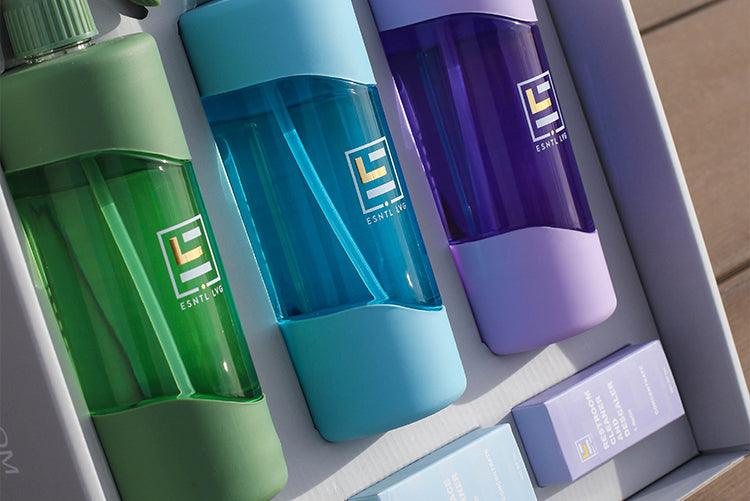
What does “Green” even mean?
The term "green" in the context of cleaning products lacks a standardized definition, often leading to confusion among consumers. Manufacturers use this label to convey various attributes, such as being made from plants, gentle on the skin, biodegradable, concentrated for reduced water usage, or energy-efficient. However, these marketing messages can be misleading, as they may not accurately reflect a product's overall impact on the environment, human health, and sustainability. Attributes associated with "green" can range from the sourcing of raw materials to manufacturing processes, product performance, and disposal. Consumers often face challenges in understanding the full life-cycle impact of a product solely based on the information provided on labels or in marketing materials.
Unveiling Greenwashing in Cleaning Products
Greenwashing, a term used to describe products that are marketed as environmentally friendly but may not meet such claims, is a prevalent concern in the cleaning product industry. The term "green" itself is often used as a marketing tool without clear regulatory standards. Words like "natural," "plant-based," "non-toxic," "free of," and "eco-friendly" are also employed without regulation, making it challenging for consumers to discern the actual environmental impact of a product. To address this issue, consumers are advised to look for third-party certifications and seals from organizations such as the Environmental Working Group (EWG), the Environmental Protection Agency (EPA), UL Ecologo, and Green Seal. These organizations assess and verify products based on specific criteria related to environmental sustainability and safety.
Navigating Green Cleaning Product Labels
Understanding the terminology used on labels is crucial when navigating the landscape of green cleaning products. Terms like "natural," "plant-based," "non-toxic," "free of," and "eco-friendly" are often vague and unregulated. Consumers should be cautious about relying solely on these terms and instead look for seals of approval from reputable organizations. Certifications such as EWG Verified, Safer Choice, UL Ecologo, and Green Seal indicate that a product has met specific criteria related to safety, environmental impact, and sustainability. By relying on these certifications, consumers can make more informed choices and avoid falling victim to greenwashing tactics employed by some manufacturers.
The Challenge with Fragrances in Cleaning Products
Fragrances in cleaning products can pose challenges, as they often contain volatile organic compounds (VOCs). These VOCs can contribute to respiratory issues and other health problems, particularly with prolonged exposure. The term "fragrances" on labels might not provide adequate information about the specific ingredients, potentially hiding harmful substances like phthalates. To address this concern, organizations like the EWG require products with their seal to disclose detailed information about the ingredients in their fragrance mixtures. Consumers are encouraged to be vigilant about the potential health impacts of fragrances and choose products that prioritize transparency in disclosing fragrance ingredients.
Do-It-Yourself (DIY) Cleaning Alternatives
As an alternative to commercially available cleaning products, consumers can explore do-it-yourself (DIY) options using simple ingredients like distilled white vinegar, citrus, and baking soda. ESNTL LVG's solutions are also a great alternative to cleaning surfaces such as stoves, countertops, restrooms, toilets, mirrors, and other glass. Our products all use biotechnology to ensure they are pet safe and overall safe for the environment!
Embracing Sustainability in Cleaning Practices
Beyond the choice of cleaning products, sustainability in cleaning practices involves reducing, reusing, and recycling. Consumers are encouraged to use cleaning products more sparingly, opting for concentrated forms to minimize packaging waste, and using reusable glass bottles to promote ending single use plastics. High-touch areas should also be prioritized to reduce overall product usage. Embracing a holistic approach to sustainability involves considering the entire life cycle of a product, from sourcing raw materials to disposal after use.
In the quest for eco-friendly cleaning, it's crucial to cut through the marketing buzz and truly understand what "green" means. Green cleaning goes beyond trendy labels, incorporating sustainable practices, safe ingredients, and reduced environmental impact. It's about making informed choices that benefit both your home and the planet. As you embark on your green cleaning journey, consider reputable certifications, be mindful of red-flag terms, and perhaps explore DIY alternatives. By navigating the green cleaning landscape with knowledge, you empower yourself to make choices aligned with a healthier, more sustainable lifestyle. Cheers to cleaner homes and a greener planet!
